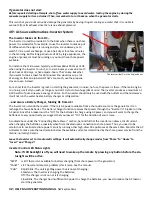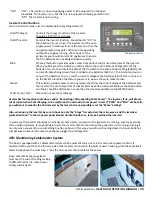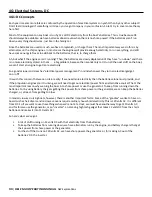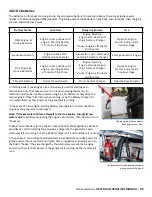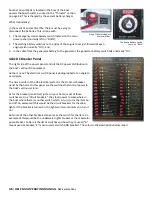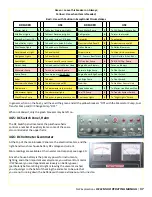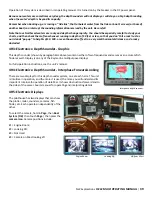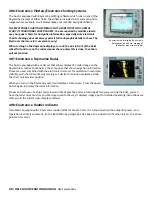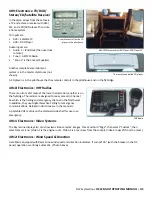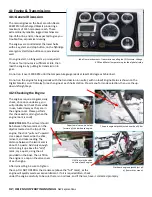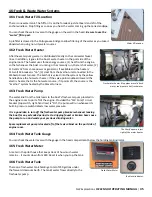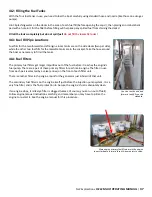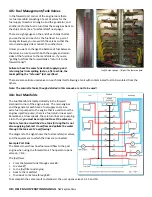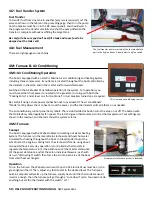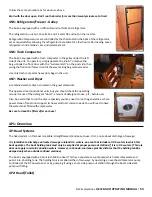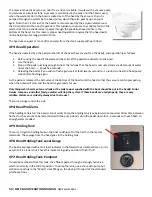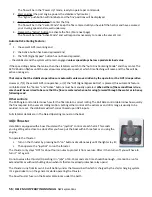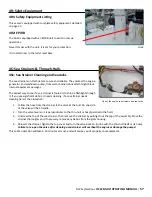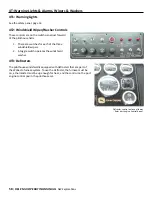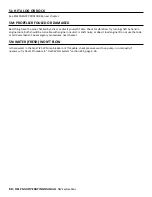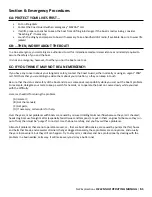
46
|
HELE MAI OPERATING MANUAL
NW Explorations
4K7: Waste Water
Waste water from the sinks and showers (but not from the toilets) is dumped overboard in accordance with U.S. and
Canadian law. From sink basins, the water simply flows by gravity overboard. Since the floor of the shower is below the
water line, built in shower sump pumps operate to lift this water back above the waterline and dump it overboard.
It is very important that the “sump pump” breaker in the DC panel be left “On”.
4K8: Watermaker
Hele Mai is fitted with a Village Marine Watermaker.
This sophisticated unit is seldom required in normal
charter use, and we recommend that you do not
use it unless absolutely necessary, for incorrect
operation can damage the membranes which purify
the water.
If circumstances do require its use, follow this basic
checklist:
1. You must have the generator running or be using shore power;
2. Turn on the Low Pressure and High Pressure water valves on the unit in the engine room;
3. Operate the controls so that the unit is running;
4. When the unit is turned off, follow the “reverse flush” procedure.
Full instructions for the watermaker’s operation are on pages 31-33 in the Village Marine operating manual kept in the
grey manual box in the salon cabinet at the port end of the galley counter.
4L:Fuel System
4L1: Fuel System Concept and Introduction
Fuel System Diagrams are on page 48 for your reference!
The 700 gallons of Diesel fuel aboard Hele Mai is carried in:
•
“forward” tanks of 250 gallons each side of the engine room;
•
“aft” tanks of 100 gallons each side of the engine room;
•
a pair of “lazarette tanks” (totaling 100 gallons) are NEVER to be used! *see note below
This gives the boat great cruising range, but it also means the operator must have some consideration of fuel
management in the boat’s operation.
Diesel engines pump a large amount of fuel from the tank, injecting enough fuel at high pressure into the engine for its
operation, and use the excess to cool the injection pump equipment on the engine. The unused excess is then returned
to the tank. For instance, at a given throttle setting for long-range cruising, an engine might be using only two or three
gallons per hour, but pumping 15 or 20 gallons through its fuel system. The unused fuel “makes the circuit” through the
fuel filters and engine fuel pump, then returns to a fuel tank.
Note: The Lazarette Tanks, though detailed in this manual, are not to be used!
The watermaker (above) is in the engine
room; the control (right) is in the pilothouse.

